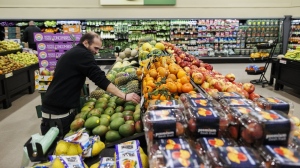The latest data from Statistics Canada shows that grocery inflation has slowed down in March, but the price growth at restaurants remains strong.
According to the report, the overall food inflation rate in March was 1.1%, which is a decrease from the 1.5% rate in February. This is the lowest inflation rate for food since August 2020.
The slowdown in grocery inflation can be attributed to lower prices for fresh vegetables, which saw a decrease of 6.7% in March. This is a significant change from the 9.5% increase in February. Additionally, the price of fresh fruit also decreased by 1.6% in March.
However, the report also showed that the price growth at restaurants remained strong, with a 2.3% increase in March. This is slightly lower than the 2.4% increase in February, but still higher than the overall food inflation rate.
Experts believe that the ongoing COVID-19 pandemic has played a significant role in these trends. With more people cooking at home, the demand for groceries has increased, leading to higher prices. On the other hand, the restaurant industry has been hit hard by the pandemic, resulting in lower demand and lower prices.
Despite the slowdown in grocery inflation, some items saw significant price increases in March. For example, the price of meat and poultry increased by 4.8%, while the cost of dairy products went up by 2.4%.
Overall, the data suggests that Canadians are still feeling the impact of the pandemic on their grocery bills. While the decrease in grocery inflation is a positive sign, the strong price growth at restaurants may continue to put a strain on consumers’ wallets.
As the country continues to navigate through the pandemic, it will be interesting to see how these trends evolve in the coming months. Will grocery inflation continue to slow down, or will it pick up again? And will the restaurant industry be able to bounce back from the challenges it has faced? Only time will tell.




